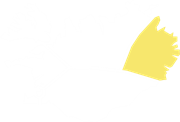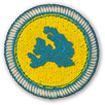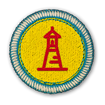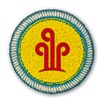Til hamingju is Icelandic for congratulations.
Now you have learned the A-Ö of Iceland and completed all of the regional classes. Hope you had some fun!



More than a thousand years ago, Icelandic turf style farmsteads developed from the longhouse – a tradition brought to Iceland by Viking settlers. The Icelandic turf houses were unique in that they provided insulation against harsh Icelandic winters as well as being durable, renewable and easy to source.
One of the few remaining turf farms standing is the farmstead at Bustarfell, located in Vopnafjörður. This gem of Arctic architecture was rebuilt in 1770 after a fire destroyed the original farmhouse, and it is now a Heritage Museum and a lovely spot to visit during the summer months. …


Resembling a natural fortress, this imposing rock is known as the “City of the Elves” (or “Hidden People”, huldufólk). It’s believed to be the home of Borghildur, the Queen of Huldufólk in the East. Whether you believe it or not – and many Icelanders believe – this landscape will cast its spell and conjure up all kinds of creative imagery as to who or what dwells within.
Álfaborg is located at the mouth of the Borgarfjörður-eystri fjord, an area that is also home to many of the region’s most magnificent hiking trails.


Idyllic Icelandic churches are plentiful and relatively easy to spot while driving the country roads. They are unique in architecture and colour, and are often found in solitude within nature’s domain.
The Blue Church of Seyðisfjörður is one of the most recognisable, and its distinct style and blue hue – and the rainbow painted road that leads to it – has become a favourite destination spot for both locals and travellers attending services, concerts and other public gatherings.


Iceland’s endless bright summer days inevitably bring the opposite: short, dark winter days. Instead of hibernating, the folks out East celebrate the change in seasons and welcome the darkness with the Days of Darkness Festival.
The festival kicks off in November, and many towns and residents in the region plan events such as concerts, organised walks or simpler touches like lighting candles and outdoor fairy lights to brighten up the darker days. Embracing this time of year with open arms is what it’s all about.


Egilsstaðir (Egill’s place’), the largest town in the East, is a relatively young community growing to meet the needs of the region. Serving as a hub for air travel and leading in commerce, it’s a perfect destination to satisfy your appetite at any one of its cosy restaurants and cafés.
Before venturing onward, pop into the East Iceland Heritage Museum to learn about the area’s nature and history, and then stop by the Egilsstaðir Visitor Centre for some personalised travel tips. Whether you’re interested in hiking, swimming, cycling, skiing, horse riding, or simply a relaxing spa treatment, the informative staff will be happy to help you out.


The Delicacies of the East is an association of food producers and restaurants in East Iceland that have come together to showcase their products. Standing proud of their regional harvest, they have decided to join forces to create a “stamp” that serves as a hallmark of quality for food from this area.
These delicacies include wild reindeer, goose, mushrooms, berries, barley, and various other local highlights. Venture into new territory and explore the tastes from East Iceland.


A French connection with Iceland developed in the mid-19th century until the beginning of the Great War. From March through September, hundreds of French fishermen would migrate from France to the town of Fáskrúðsfjörður. The French community was so strong that over time a small hospital and a cemetery were built to accommodate them.
The visiting fishermen are long gone, but the history lives on with an annual French Days Festival held in July. The original French hospital has been reconstructed as a hotel and museum, paying particular homage to this period of Icelandic history.


This small cove is the site of a striking art piece by Sigurður Guðmundsson called Eggin í Gleðivík (“the Eggs in Merry Bay”). The walkway along the beautiful bay in Djúpivogur displays 34 monumental granite eggs, each one representing a local species of bird (referred to in both Latin and Icelandic names) and depicting accurately the shape, colour and pattern of their eggs.
You can take a leisurely walk, relax and enjoy the surroundings, thereby joining the locals in the “Cittaslow” movement, which embraces the principles of improving the quality of life by slowing things down.


The East is the second-least populous region in Iceland, which means it’s home to vast stretches of pure, untouched nature. The volcanic ash fertile soil and mild summer climate of this region are perfect resources for the production of organic agriculture.
Two such farms are taking the lead: Vallanes and Havarí, which grow premium organic produce and crops straight from the farm to restaurants and shops. Icelandic farmers around the countryside are following suit, keep an eye open for delicious locally grown items available in a variety of places.


Travelling can bring about many chance encounters, and while you’re in the East be sure to take the opportunity to meet and interact with the locals. Offer a greeting to the townspeople – góðan daginn (“good day”) is an excellent way to start up a conversation.
Enjoy the ambience of small towns and villages, linger in the cafés, peruse the shops and boutique – go ahead ask questions, most folks have a down to earth nature and a wealth of knowledge and insight that they’re willing to share with others.


Despite having no army of its own, Iceland has a cultural history related to the war years. During World War II, the sleepy village of Reyðarfjörður, with a tiny population of 300 townspeople, nearly got lost within the swarm of British soldiers that occupied their town.
With the troops long gone, the magnitude of their presence and the effect it had on Reyðarfjörður have been preserved within the walls of the Wartime Museum. Visitors are invited back to these days of occupation and offered an insight into this epic time.


Iceland is in no short supply of interesting and intriguing destinations, and one that is worthy of attention is Jafnadalur, a valley in Stöðvarfjörður. Here resides Einbúi (“the Hermit”), an unexpected set of towering solitary rocks in an otherwise flat surrounding.
The companion to the Hermit is Steinbogi (“Stone Bow”), a large stone archway. These two natural phenomena stand close in proximity and leave one wondering how the two friends got there.


Jóhannes S. Kjarval (1889–1972) is one of Iceland’s most famous and beloved painters, and his image has even graced the 2,000 krona note. He grew up in the beautiful surroundings of Borgarfjörður eystri, so it’s no wonder he made a lifelong career out of painting the inspiring Icelandic nature.
Near his childhood dwelling, on the way from Egilsstaðir to Borgarfjörður eystri, is a peaceful little haven known as Kjarvalshvammur. This idyllic spot is home to Kjarval’s tiny cabin and spartan boathouse, where he often stayed for extended periods during the summertime, producing some of his most famous paintings. Many of these works now hang in the Reykjavík gallery that bears his name, Kjarvalsstaðir.


Throughout the ages, legends have been passed down from generation to generation, and the inhabitants of East Iceland are no different. Here, they share the tale of what lies in the depth of their famous river Lagarfljót. According to folklore, a mysterious entity, the Wyrm of Lagarfljót, looms in this glacial river.
The creature is believed to be much older than the Loch Ness Monster, with references dating back to 1345. In recent years, sightings, photos and even video evidence is considered proof (or not) of its existence – you be the judge.


Skriðuklaustur is the site of a 15th-century Augustine monastery, and now also the location of a beautiful country manor. The monastery was originally founded in 1493 and was the last of its kind from the medieval period. Recent excavations have revealed its ruins, and visitors are welcome to come and explore them.
Close to the ruins are Gunnarshús, the farmstead of acclaimed author Gunnar Gunnarsson (1889–1975). This eye-catching stone manor was designed in 1939 by German architect Fritz Höger, and today it serves as the Centre for History and Culture and a retreat for artists and authors. It also houses an exhibition dedicated Gunnarsson, and a café that overlooks the grounds with stunning views.


The stunning Hengifoss waterfall stands proud as Iceland’s reputed second highest waterfall, cascading downward from a height of 128 m. There is no shortage of water falling on this island; in every nook, cranny, and crevasse around the island, a waterfall is likely to form to some degree.
Hengifoss provides more than its astounding height: its steep walls are embellished with a striped Tertiary lava strata. Layers of red clay pressed between basaltic lava create this facade and adds to its breathtaking presence.


There are 11 ski resorts to choose from around Iceland, but the largest is Oddskarð in Fjarðabyggð, boasting incredible scenic views and ski runs that typically operate from December to April. A little further north is also the wonderful Stafdalur Ski Station, located just a 10-minute drive from Seyðisfjörður. Icelandic winter sport culture is at an all-time high.
Over the last decade or so the secret has spread about the unique and fantastic runs found in Iceland, where one can ski from mountaintop to the shores of the Atlantic Ocean, bask under the colourful hues of the Northern Lights and partake in or watch major winter sport events. There’s more than just darkness during the winter – we have our winter sports!


Winter is one of the most enchanting times to visit the East. The sun dips down for an extended rest, and only appears for a few hours a day. Freshly fallen snow brightens the spirit and adds to the magic, but it can also make many roads icy and inaccessible.
It is quite common during these winter months for towns to find other means of transportation while winter blows its mighty horn. The small town of Mjóiförður routinely relies on alternative modes of transportation to get supplies in during the winter months.
Before venturing out on a beautiful winter drive be well informed and prepared.


Papey is an island off the coast of the village of Djúpivogur. The name is derived from the Irish monks known as Papar, who were believed to have lived on the island and who were most likely Iceland’s very first residents.
Papey was inhabited until 1966, and today there remains a lighthouse, a house, a church and a weather station. There are also large colonies of Atlantic puffins on the island, and you can take the ferry to see them during summer.


In recent years Iceland has grown in popularity as a destination for a movie and television productions. You’ll encounter one such filming location as you drive along the curving fjord road that leads to the village of Reyðarfjörður, the setting for the fictional town of Fortitude, a favourite British sci-fi thriller.
Many are still unaware – but won’t be for long – of our very own Icelandic television mystery series, Ófærð (Trapped), filmed on location in Seyðisfjörður. Trapped may be coming to your corner of the world soon. It’s been well received and syndicated to other countries with the second season due for release in 2018.


Vatnajökull National Park is the largest national park in Western Europe, covering 14,141 km2, or 14% of Iceland’s total area. East Iceland contains 2,384 km2 of this incredible landscape, and highlights in the eastern region of the park include the Kverkfjöll glacier mountain range, the Hvannalindir oasis, and the towering 1,833-m Mt. Snæfell, which is Iceland’s tallest mountain outside the glacier regions.
You can drive to Snæfell in a 4x4 vehicle, and close by you’ll find the Snæfellsstofa Visitor Centre, a uniquely-designed building that has an excellent multimedia exhibition about the Highlands, as well as a café.


Creativity is nurtured and explored at a young age in Iceland; children are introduced to a variety of art forms in their school environment, which often carries over into adulthood. It’s fitting that young people in Iceland and around the globe meet annually in Seyðisfjörður for the LungA Art Festival.
Taking place in summer, this is a week-long gathering of creative minds and energy in an environment of unsurpassed beauty – bringing forth new ideas and concepts and ending the week with exhibitions, concerts and celebrations.


East Iceland has countless wonderful hiking trails through its diverse and spectacular landscape. One of the most popular spots for people of all skill levels is Hallormsstaður, Iceland’s largest forest, located a little south of Egilsstaðir.
Well-marked trails wind their way around the woodland and through beautiful spots such as the arboretum, which has over 80 species of trees, as well as Ljósafoss waterfall, the Klifá river rock arch, and Atlavík cove on the banks of Lagarfljót river. There is a popular camping ground at Atlavík and another at Höfðavík, a pretty spot little further northwest along the river.


The term “a person who went West” stems from the exodus of roughly a quarter of the Icelandic population (nearly 20,000 people at the time) that emigrated to North America and in some cases even South America in the aftermath of the disastrous eruption of Mt. Askja in 1875. The majority of Icelanders were from the East and Northeast regions where the destruction was the worst felt.
In 2002 the East Iceland Emigration Center in Vopnafjörður opened with the help of volunteers to facilitate contact with descendants of the Icelanders who took this journey west and to share stories, photos, and family trees of their Icelandic roots.


Iceland is like a geologists’ candy store, and most locals have a deep affinity for the landscape and the treasures it holds. This is particularly true of the late Petra María Sveinsdóttir, whose modest home in Stöðvarfjörður showcases her collection of nearly 150 different types of mineral, from black onyx to green jasper and hundreds of stones in between. Her home is open as a museum where visitors can take in the splendour of her passion.
When out in nature, keep in mind that some stones are protected by Icelandic law, and it is important to leave them where they are so that others can continue to enjoy their beauty.


Iceland’s summers aren't known for extreme heat, yet we had our moment back in 1939, when the highest recorded temperature in Iceland occurred out East at Teigarhorn in Berufjörður, with the thermometer rising to a scorching 30.5°C. In general, during the summer we enjoy warm temperatures hovering around 10–13°C.
The flip side to this is Icelandic winters: they are not as cold as the name might suggest and are actually relatively mild for the latitude.
The best way to enjoy and be comfortable in the Icelandic weather, no matter the season, is to dress in layers. That way you're always prepared and comfortable.


In Norse mythology, Ýmir was the earth’s very first being and the ancestor of all creatures. He was ultimately slayed by Óðinn and his brothers Vili and Vé, who created the cosmos from his body.
The poetically minded may see a parallel between this story and the creation of the Kárahnjúkar Hydropower Plant, which involved damming the Jökulsá á Dal river to harness its energy to provide clean electricity. Travellers are welcome to come and see this development, which is the largest of its kind in Iceland.


Icelanders love music! At any given place around the island, there is some concert or music festival to be heard. Neskaupstaður is no exception, and every summer since 2005 this community has played host to hundreds of rock, punk and hardcore metal fans for the Eistnaflug festival.
What initially started with an idea of throwing a party to bring metal music to this isolated fjord town steadily grew to the three days of nonstop rocking energy it has become.


In Iceland, we often refer to the Icelandic nature with the word ægifögur, which means beautiful and scary at the same time. Many of the natural wonders around Iceland are just that – pure, untamed nature without barriers standing between you and it. That’s part of the beauty and mystique – being one with nature.
With that, however, comes the flip side of possible danger. To balance this out, be well informed, read any signs and warnings at each location and use caution along the way. To get the fullest enjoyment out of your travels, whether venturing out by car or foot, keep this in mind; it’s always wise to share your travel plans with others, and download the 112 Iceland app for greater assurance in getting to your destination.


Iceland’s roads are easy to navigate, and Highway No. 1 (the “Ring Road”) amplifies this point. But not all roads in Iceland are created equal; some are for experienced drivers only. An example of this is Öxi (“The Axe”), one of East Iceland’s most challenging roads to maneuvre.
This gravel passage zigzags along a ravine from sea level to 500 m over a mountaintop, which is not for the faint of heart. When driving around Iceland, it’s imperative that you “know your road” and make decisions accordingly. Keep it safe and check out www.safetravel.is for peace of mind and enjoyable driving while in Iceland.
Now it is time to learn more about the 7 regions of Iceland.
Take the quiz to test out your skills and be one step closer to know all about the 7 regions of Iceland!


You just aced this class so you are now one step closer to knowing the 7 regions of Iceland inside out.
Share on Facebook


Now you have learned the A-Ö of Iceland and completed all of the regional classes. Hope you had some fun!
Finish all the classes to have the chance to win a trip to Iceland


There is something magical about the Westfjords, the region that could arguably be labelled "Iceland's best kept secret". Isolation has preserved the region in a relatively unspoiled wilderness, making it a must-see for any serious explorers.


It's all about beautiful contrasts in the North, a land where long valleys and peninsulas are interspersed with big mountains, lava fields and smooth hills carved out by powerful rivers. Go big or go home!


If drifting through picturesque fjords from one warm town to the next is your cup of tea, head to the East. It is home to the country's largest forest, lush farmlands and even the mysterious lake monster in Lagarfljot.


What's so cool about Reykjanes? Not only is it where most visitors set foot in, a geothermal wonder and the home of the spectacular Blue Lagoon, but also a place where lighthouses outnumber villages.


If the regions were pop songs, the South would probably be the chart-topping hit, since it is renowned for its beauty and the home of some o f the country's most visited tourist attractions.





